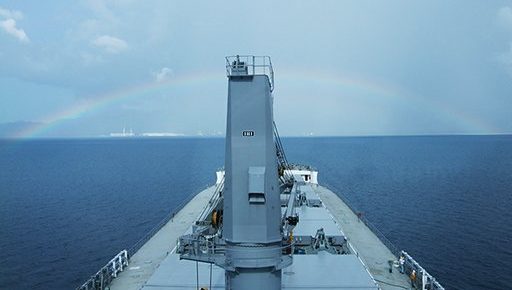Nowcasting is the name of the game to improve CII

Splash had to reach for the dictionary this morning. Nowcasting is a thing, apparently, as Mike Konstantinidis, CEO at METIS Cyberspace Technology, explains.
Transparency is always helpful where tensions arise between different business interests, especially when multiple objectives need to be achieved at the same time.
Global seaborne trade, for example, is constantly exposed to uncertain charter rates, competitive disruption and evolving regulations, whose separate motivations often put pressure on relationships between charterers, ship managers and those working at sea.
One of the wins for shipping brought by real-time analytics is its ability to ensure and report vessel performance in a transparent way; another is that it opens the way for agreement – or at least greater understanding – of how and why performance should be enhanced. The volume of data generated by vessels’ equipment is, of course, huge, but Machine Learning and Artificial Intelligence make it possible to recognize trends and patterns that would otherwise go undetected, and to predict and adjust behaviours.
The principle of transparency is also fundamental to shipping’s soon-to-be implemented Carbon Intensity Indicator (CII) and, in some ways, the new regime provides a test for global shipping like no other. For the first time, the decisions made by charterers will fall within the scrutiny of an IMO instrument. In the first instance, the consequences of charterer actions are only being included by inference, although some suggest charterers should be held responsible for a ship’s CII rating at the end of the voyage.
BIMCO has been working on a new clause to define charter party agreement obligations as they relate the CII, which will presumably provide guidance on whether an instruction to speed up or a carbon intensity obligation takes precedence on a given occasion. If challenging times therefore lie ahead for cooperation between charterers and owners are concerned, there is also reason to see the CII as an opportunity to ensure that data is shared in the most constructive manner.
The analytics METIS undertakes on vessel performance constantly underscores one of the truisms of seafaring: no two ships are the same. It is a tautology which nonetheless bears repeating in the case of the CII, where variations in hull and machinery, fouling, the cargo onboard, fuel quality, the abilities of the crew, weather during a voyage and the ship’s response all influence the resulting calculation.
In fact, METIS believes that the CII represents a compelling example of the type of multifaceted challenge shipping will increasingly face in the years ahead. We also believe that only analytics that optimise performance at the level of the individual ship is fit to handle such challenges.
Today, many ship owners seek to optimize ship performance based on signals captured from navigational, electronic and mechanical equipment which generates actionable advisories. METIS foresees a not-too-distant future where ship systems have progressed sufficiently so that corrective actions can be taken in real-time (and perhaps automatically). We are choosing to call this potential functionality Nowcasting.
Nowcasting is a legitimate term made-up to describe the practice of “predicting” aspects of the present or recent past or immediate future, using Artificial Intelligence models, before anyone has time το measure or even humanly think.
Market intelligence suggests that a substantial improvement in a vessel’s CII can be achieved by fine tuning a ship’s speed profile and the RPM of the main engine, or temporarily deactivating unnecessary auxiliary machineries. These moves can also save substantial quantities of fuel. Given CII optimization as a predetermined objective, Nowcasting could ensure actionable directives that removed uncertainty for crews and for future reporting.
As is now widely accepted, round the clock 24/7 data acquisition from all available sources onboard provides a rich, high-resolution realistic picture of actual ship performance which is far superior to that gleaned from a patchwork of inconsistent manual datasets and unreliable noon reports.
In the years ahead, Nowcasting could become a powerful tool, easing the tensions between charterers, owners and crews due to its ability to ensure in real-time that agreed ship performance goals are being adhered and providing transparency at the end of the voyage that everything was done to achieve those goals.
